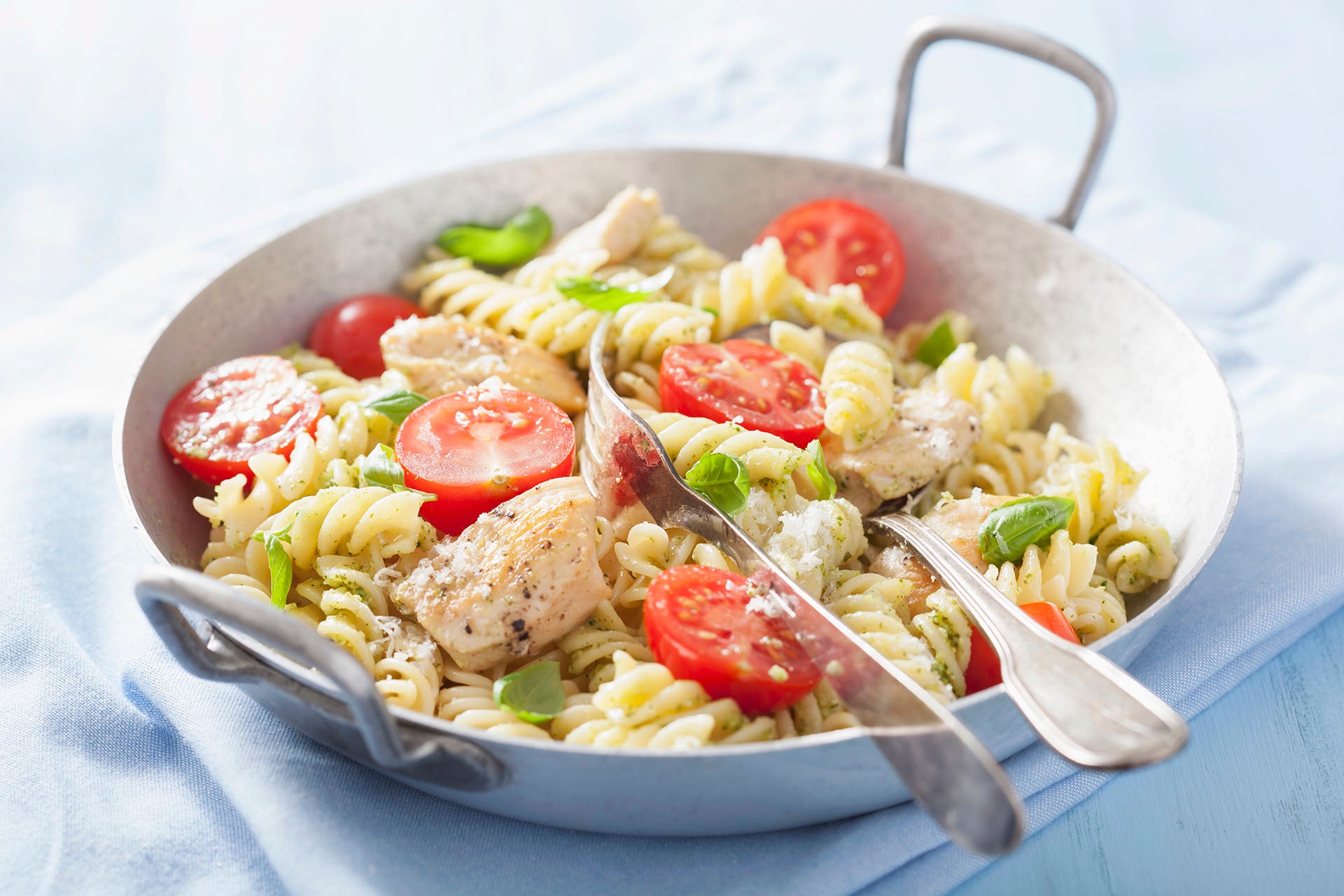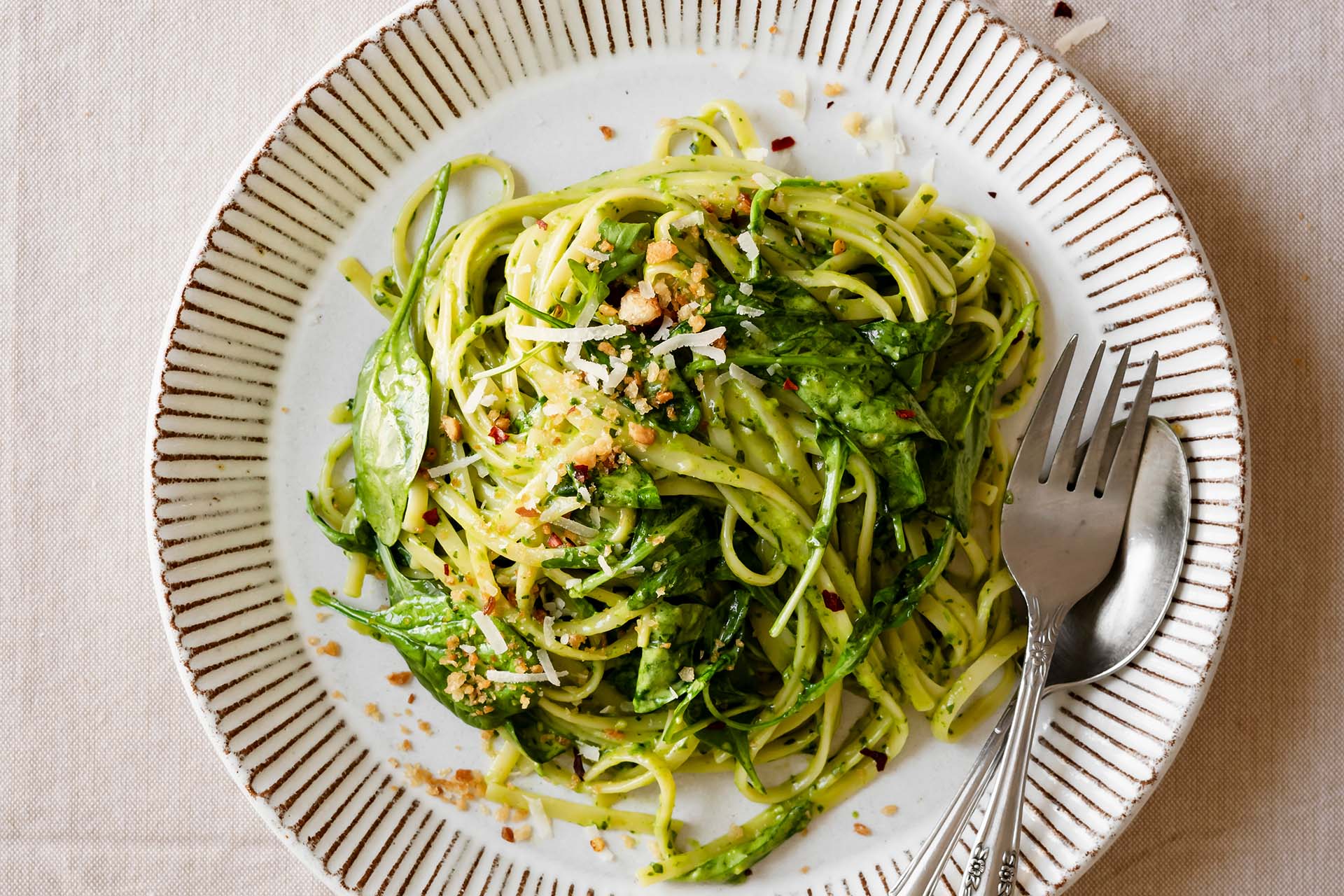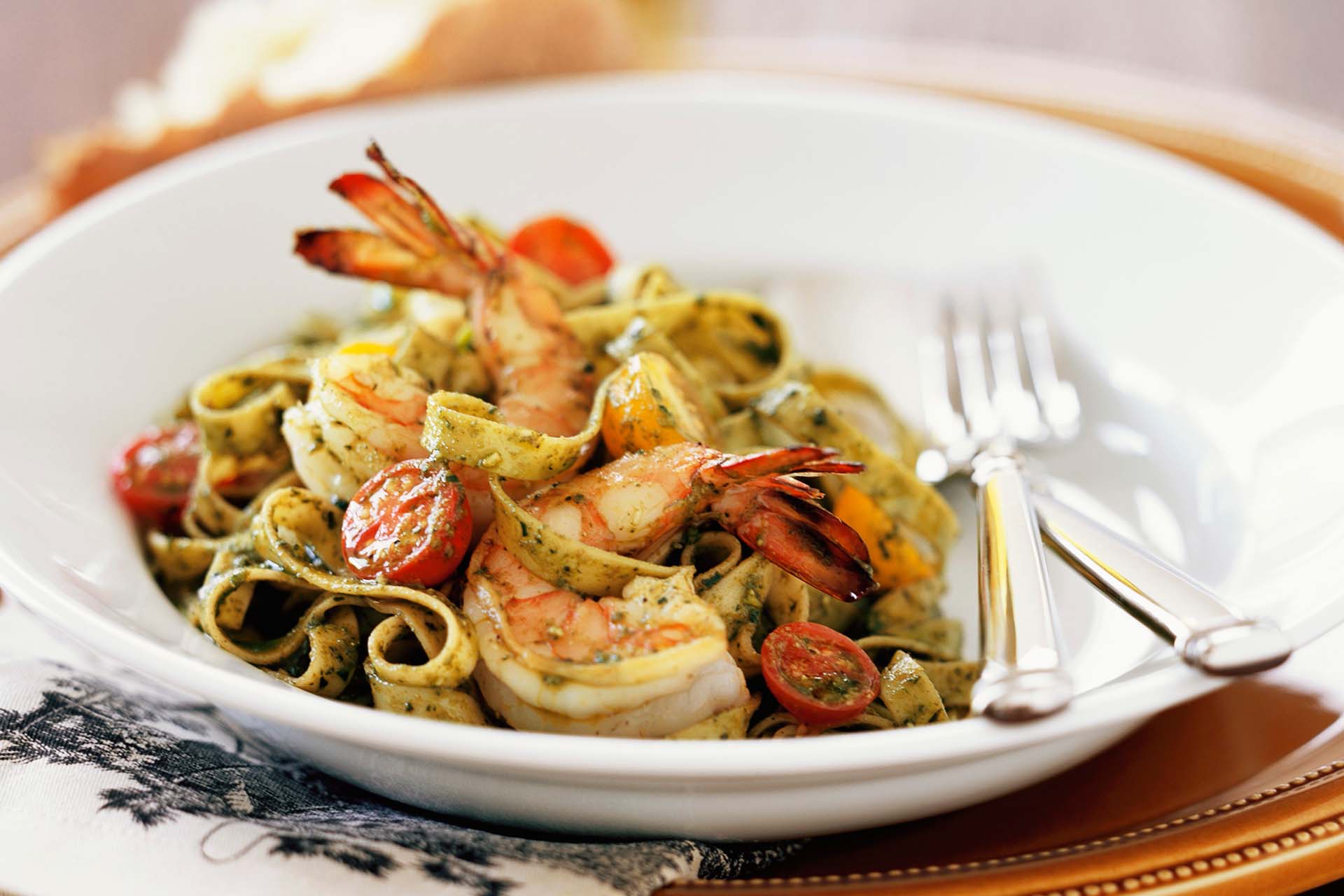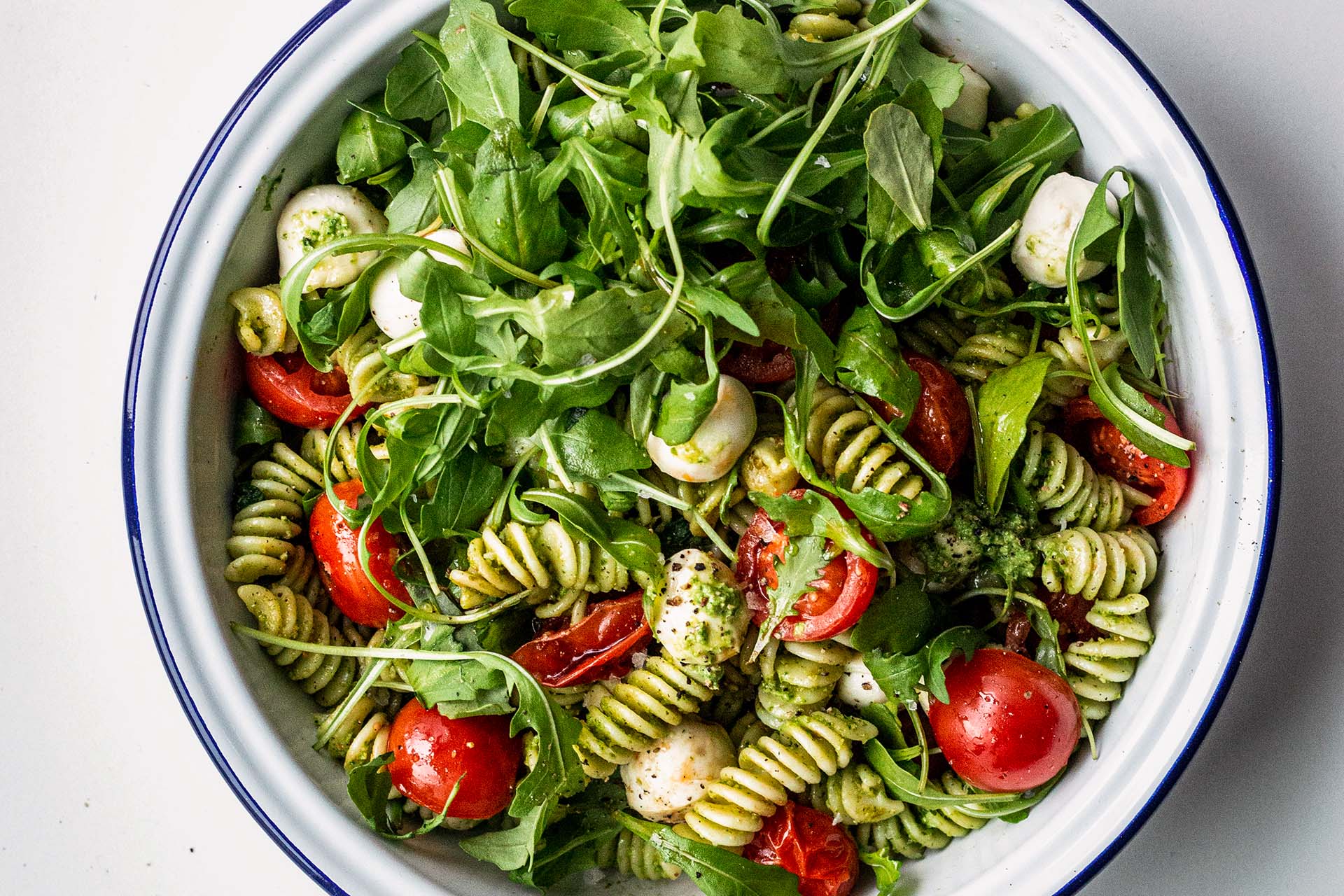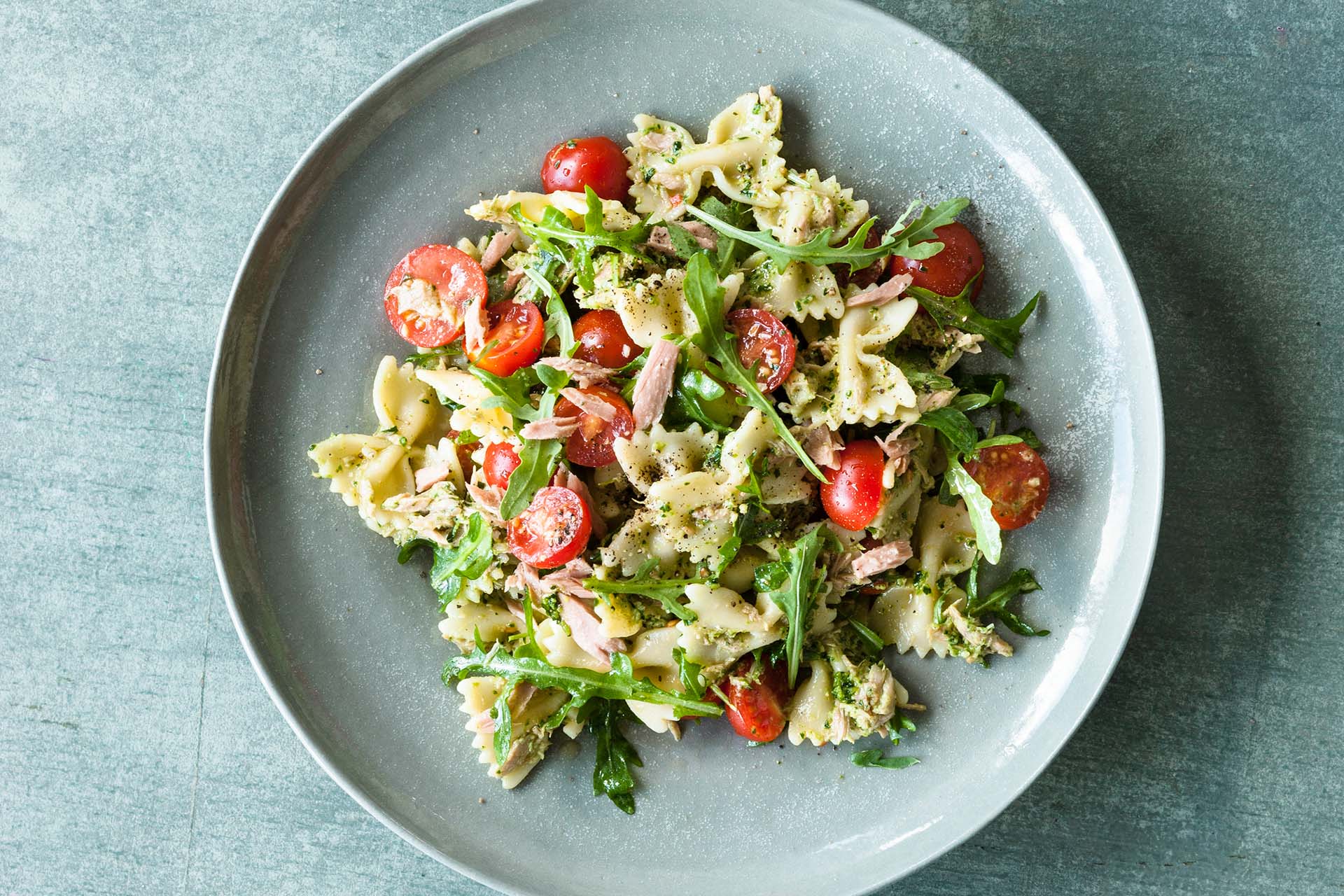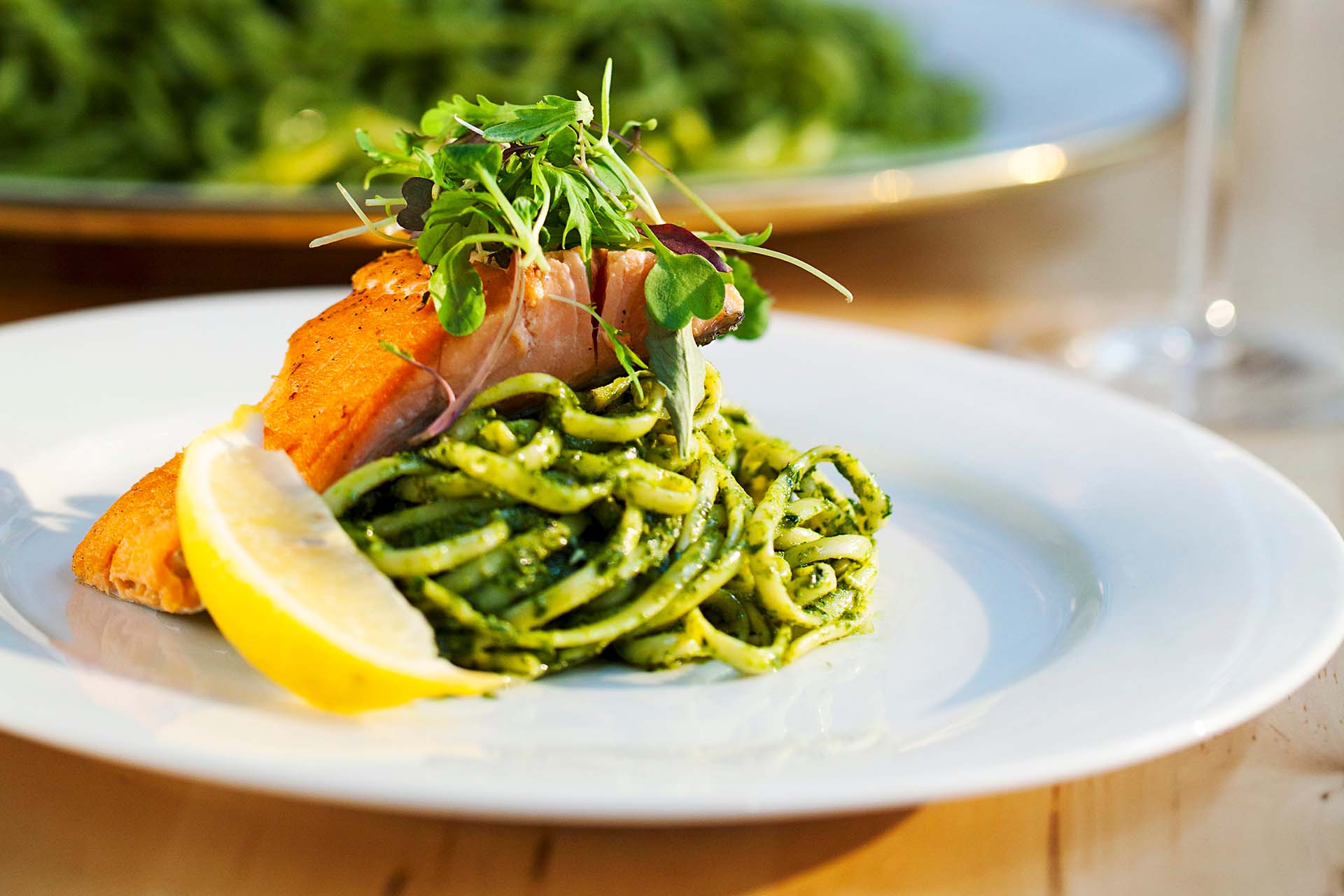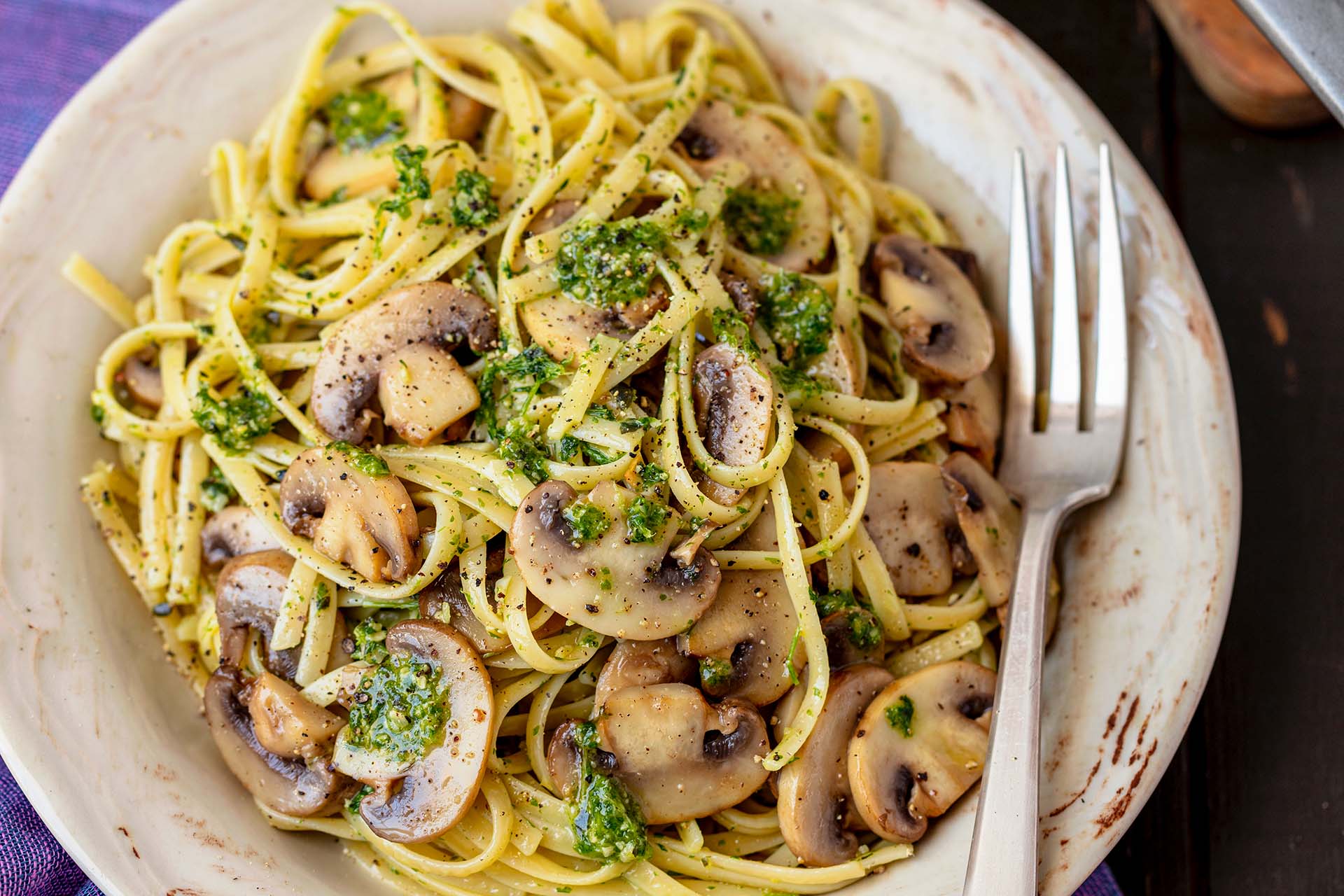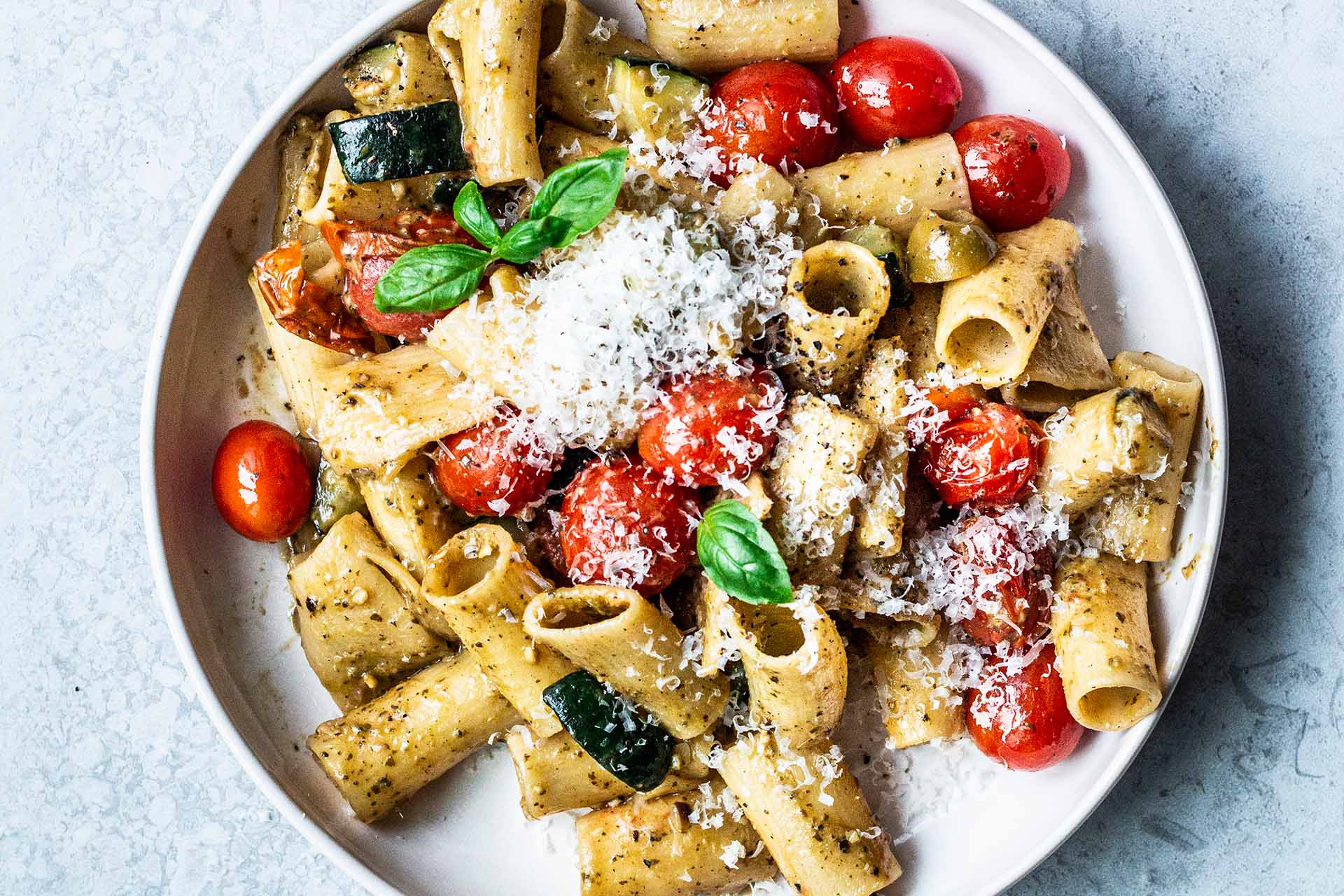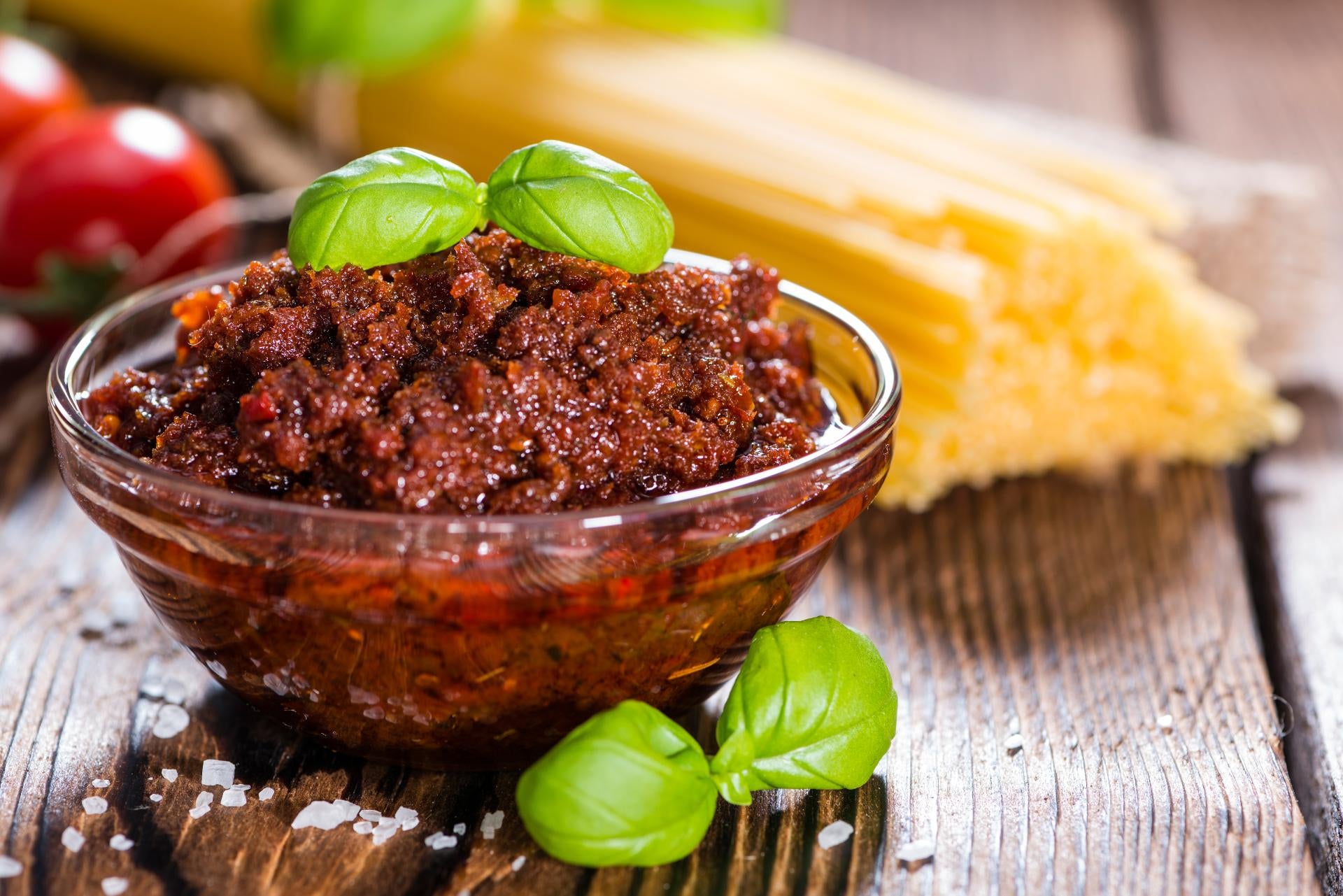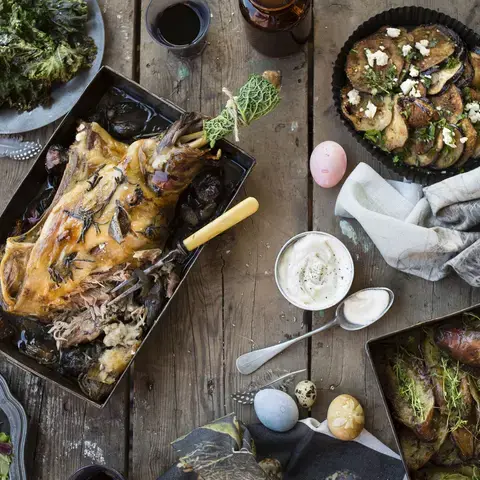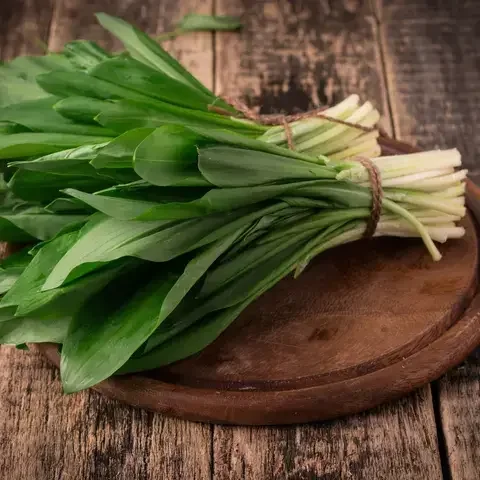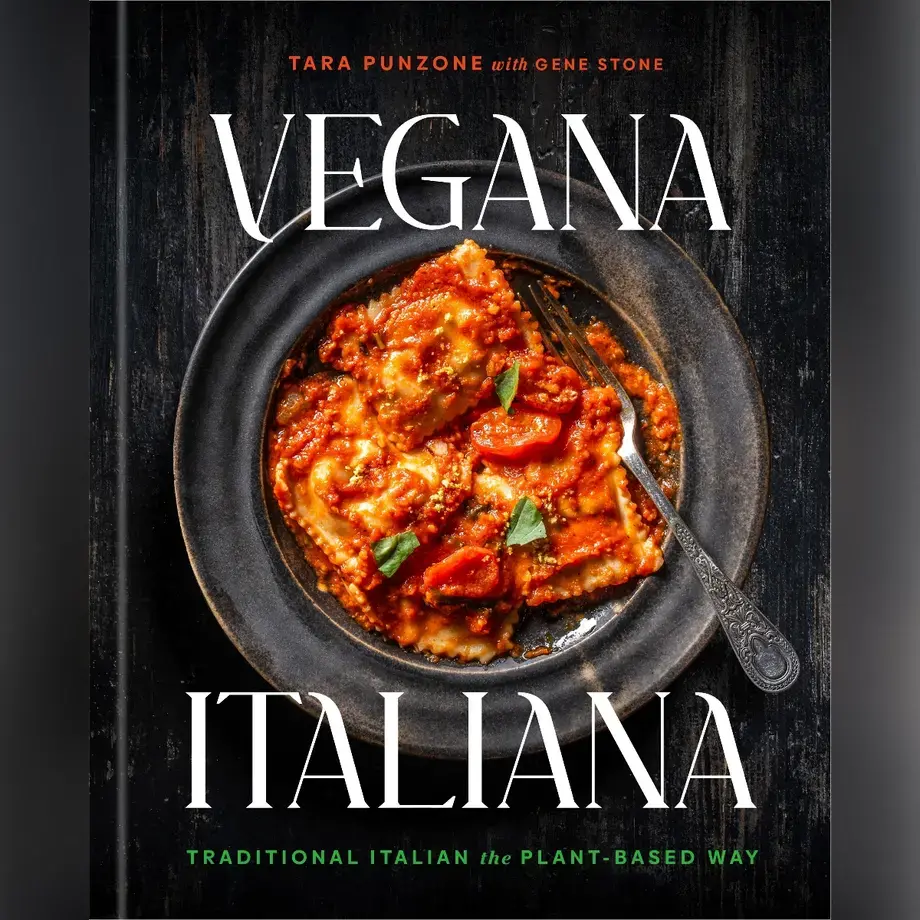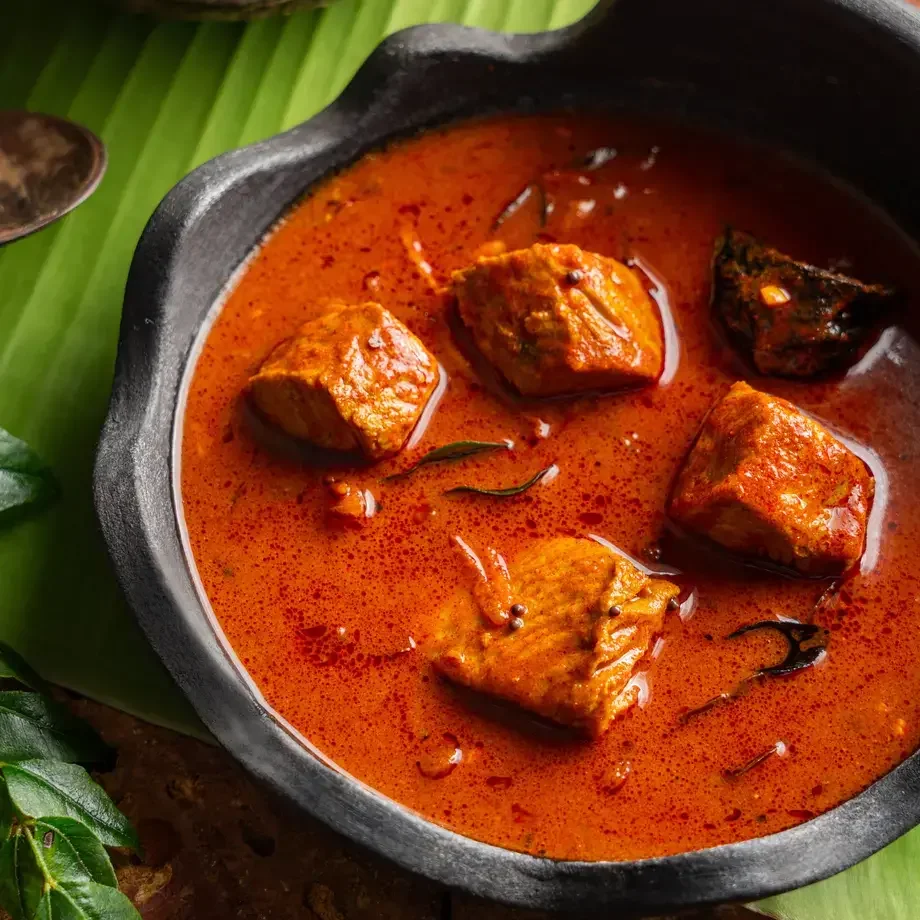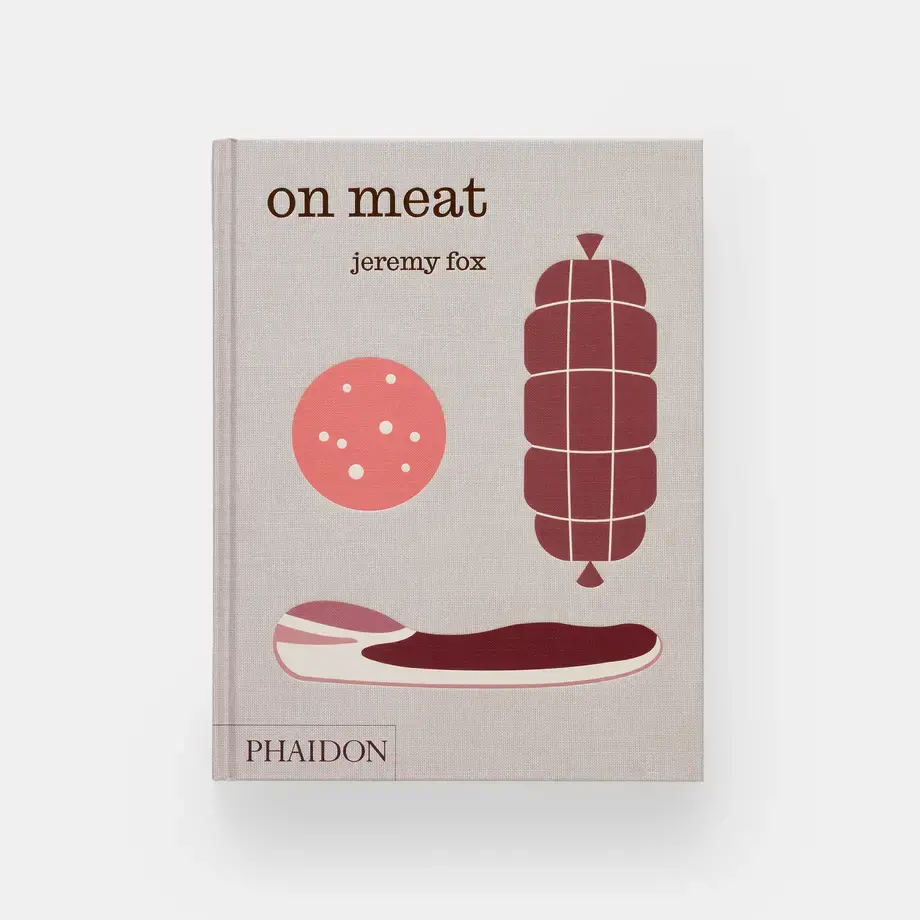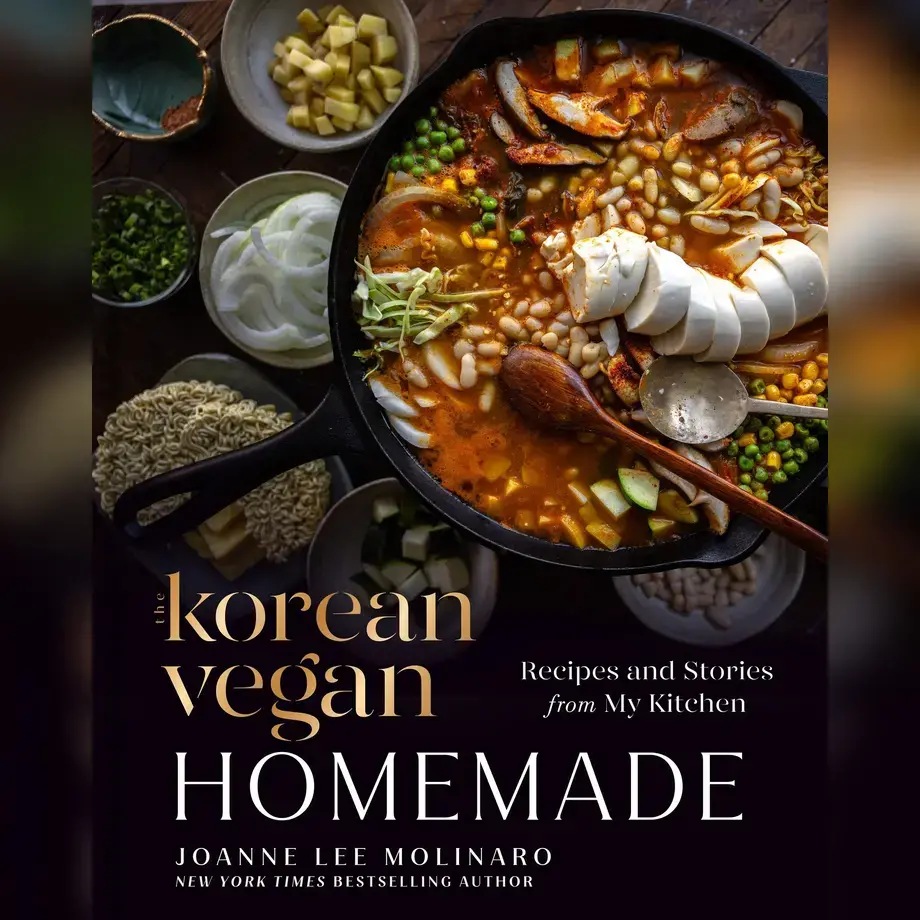What is Pesto and Where Does it Come From?
Fragrant basil, nutty Parmesan, and silky olive oil—few sauces capture the taste of summer quite like pesto. Born in the Italian port city of Genoa, in the Liguria region, this bright green sauce has been tossed with pasta, potatoes, and beans for centuries. Today, jars of pesto are found all over the world, but nothing compares to the freshness of homemade.
And the best part? Pesto is endlessly versatile. It shines in a simple bowl of pasta but also pairs beautifully with chicken, shrimp, roasted vegetables, or even spread on sandwiches. Think of it as your shortcut to instant flavor.
Before diving into creative pesto pasta recipes, start with the essential: a traditional pesto Genovese you can whip up in minutes.
Authentic Pesto Recipe
Nothing beats the zing of an authentic homemade pesto, so start by mastering this traditional version—guaranteed to deliver in every bite.
A true pesto includes basil, Italian pine nuts, Grana Padano, Pecorino, extra-virgin olive oil, and salt, all crushed together in a mortar and pestle until they form a vibrant paste. Pesto is personal, so adjust it to your taste—leave out the garlic if you prefer.
Serves: 4
Ingredients:
2 cups fresh basil leaves (packed)
2 tbsp pine nuts (lightly toasted, if desired)
½ cup grated Grana Padano or Parmesan
¼ cup grated Pecorino Romano
½ cup extra-virgin olive oil
1–2 cloves mild garlic
Pinch of salt
Instructions:
- In a mortar and pestle (or food processor), crush the garlic and salt into a paste.
- Add the basil and pine nuts, working them into a fragrant green mixture.
- Stir in the cheeses.
- Slowly drizzle in the olive oil until the mixture becomes glossy and smooth.
- Taste and adjust: add more garlic, cheese, or basil to suit your preference.
- Toss with al dente trofie or spaghetti for a classic Italian primo..
Pro Tip: Store leftover pesto in a jar topped with a thin layer of olive oil to prevent browning. It will keep in the refrigerator for up to a week or can be frozen in ice-cube trays for easy weeknight use.
Ready to take your pesto pasta to the next level? Try these eight delicious recipes, each offering its own twist on the classic combination of pasta and pesto.
Best Pasta Pesto Recipes
1. Chicken Pesto Pasta
Tender chicken and vibrant pesto are a match made in heaven.
How to make it:
- Cook the pasta until al dente.
- In a skillet, sauté sliced chicken breast until golden.
- Toss the pasta, chicken, and pesto together with a splash of pasta water.
- Add halved cherry tomatoes for freshness and top with Parmesan shavings for extra flavor.
Best pasta shapes: penne or fusilli
Try this recipe: Easy pesto pasta with chicken recipe from Allrecipes.


